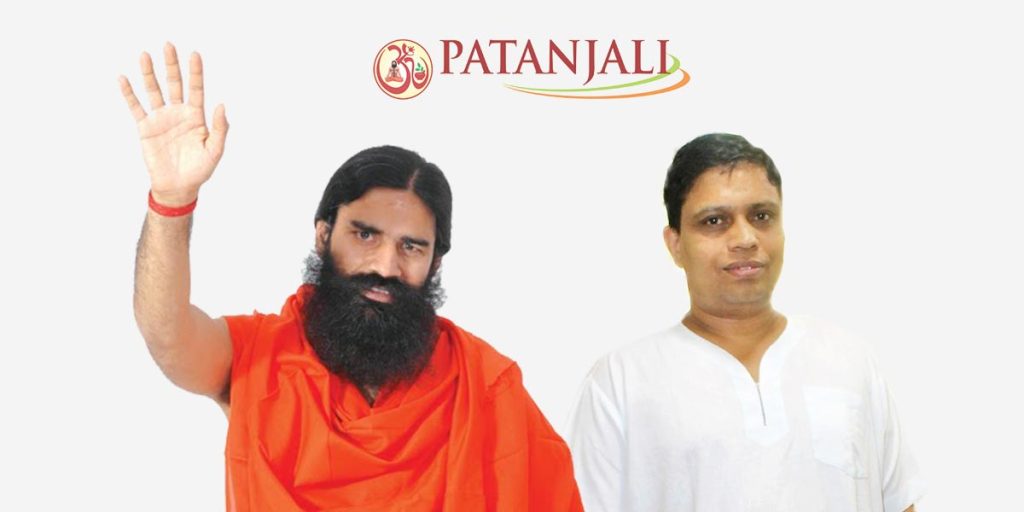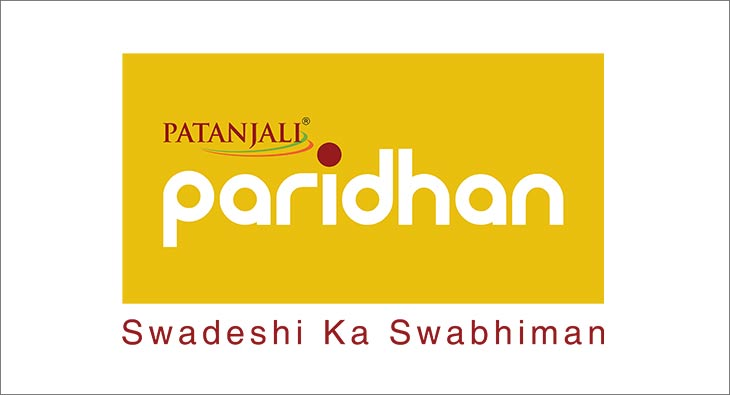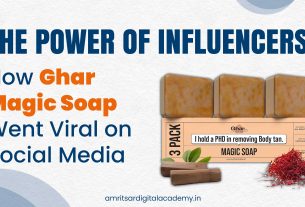Patanjali, a well known brand stands out and marks its footprint in FMCG industry. They are popularly known for their herbal and ayurvedic products. A yoga guru once started selling toothpaste and ghee, and many people thought it was just another celebrity trying something new. But by 2025, Patanjali Ayurved has grown into billion dollar company and is making big global brands rethink how they do business in India.
In this Patanjali case study, we will examine the marketing strategy of Patanjali, its effective brand positioning, digital approach, and unique combination of emotional and nationalistic marketing that drove its success in Ayurvedic products. We will also perform Patanjali SWOT analysis to understand its strengths, weaknesses, and future opportunities in 2025 in this Patanjali case study.
Table of Contents
- Founding of Patanjali Ayurveda
- Patanjali Brand Positioning
- Marketing Mix of Patanjali (4Ps Analysis)
- The Marketing Strategy of Patanjali
- Successful Marketing Campaigns by Patanjali
- SWOT Analysis of Patanjali
- End Note

Founding of Patanjali Ayurveda
The journey of Patanjali started in 2006 with two founders Baba Ramdev and Acharya Balkrishna. Baba Ramdev was already well known face because of his yoga sessions on television and Acharya Balkrishna was his close associate who had Ayurvedic knowledge and business acumen.
Vision of Patanjali Brand
The main motive of Patanjali is to promote Ayurveda and Swadeshi products that could compete with multinational brands. They wanted to encourage people to use local products instead of foreign brands.

Powerful Patanjali Tagline
“Prakriti ka Ashirwad”
The Patanjalli tagline means ‘Blessings of Nature’ which perfectly aligns with the brand’s niche. In the initial phase, their journey was not easy. They face challenges including limited distribution, skepticism from urban consumers, and tough competition from established FMCG big brands. But with Baba Ramdev’s yoga camps and television programs became turning point for the Patanjali. Those who trust him for health advice started trusting Patanjali products too.
Patanjali Brand Positioning
Patanjali not only sells products, but their main aim is to promote swadeshi and herbal products. While other brands focused on flashy ads but Patanjali makes them simple, natural and pure.
For example, Patanajlai Desh Kanti toothpaste grabbed 14% of India’s toothpaste market by 2018. That’s how Patanjali stands in market with big players of FMCG.
Marketing Mix of Patanjali (4Ps Analysis)
Marketing mix of Patanjali includes products, price, place, and promotion strategies. Patanjali utilises its marketing strategies very well to succeed as a brand in FMCG industry. As demand for Patanjali products increases, most retailers start promoting their products in their outlets. Let’s discuss marketing mix of Patanjali:
Product Mix of Patanjali

The product mix of Patanjali Ayurved has diversity of products like beverages, healthcare, baby items, food items, ayurvedic products, beauty products, haircare, skincare, and dental care for both men and women. Patanjali produces all its products naturally without harmful chemicals for care of its consumers. Here is diverse product portfolio of Patanjali:
| Products Category | Items Included |
| Ayurvedic Medicines | Medicines for various health concerns like diabetes, arthritis, digestive disorders, and more. |
| Personal Care Products | Toothpaste, soaps, shampoos, hair conditioners, hair oils, face washes, and skin creams. |
| Healthcare Products | Chyawanprash, health juices like Aloe Vera juice and amla juice, and digestive products like herbal teas and health bars. |
| Food Products | Pulses, flour, rice, and spices as well as processed foods like noodles, biscuits, breakfast cereals, and confectionery items. |
| Beverages | Herbal teas, fruit juices, and health drinks. |
| Home Care Products | Detergents, dishwashing bars, and floor cleaners |
| Beauty and Cosmetics | Herbal mehndi, natural hair colors, and Ayurvedic cosmetics like kajal and lip balms. |
| Baby Care Products | Baby soaps, shampoos, and oils. |
| Yoga and Fitness Products | Yoga mats and other fitness related products. |
| Books and Media | Books, DVDs and other media related to yoga, Ayurveda, and health. |
Patanjali Place Strategy
They build their distribution network including Patanjali exclusive stores, modern trade outlets, and e-commerce platforms. Here is place strategy of Patanjali:
- They established vast network of their retail outlets across India.
- Start selling online through its website and major e commerce platforms like Amazon, BigBasket, and Flipkart.
- They tie up with supermarkets and general stores to increase their accessibility and ensure shopping convenience to consumers.
- Patanjali sells its full range of products across India and parts of Middle East. Its main office and factories are located in Haridwar, India.
Patanjali Price Strategy
To enter the market, Patanjali follows low pricing strategy. Penetration pricing strategy helps Patanjali to position itself as an affordable alternative to expensive multinational brands. They set their prices of products according to their benefits and quality. Patanjali offers quality products to consumers at affordable prices as compared to their competitors. They also offer special discounts to drive more sales in festive seasons.
Patanjali Promotion Strategy
Patanjali focuses on promotional and advertising strategies to boost its brand credibility. They spend on promotional planning and creating ads to attract customers. They follow traditional media including billboards, commercials, newspapers, radio, and magazines to display their ad campaigns.
Also Read: Haldiram Case Study 2025: Bold Marketing & Growth Secrets Revealed
The Marketing Strategy of Patanjali
Patanjali follows both traditional and digital marketing strategies very well. They build emotional and cultural connections with their customers. In this Patanjali case study, let’s get to know what smart marketing strategies Patanjali used to compete in FMCG industry.
1. The Face of Patanjali: Baba Ramdev
One of the biggest smart moves by Patanjali is taking Baba Ramdev as brand ambassador of Patanjali Ayurveda. People already know him for their healthy lifestyle and have full trust in him. This marketing strategy has huge impact on Patanjali’s sales.
2. Non Traditional Advertising
Instead of following scripted ads, Patanjali follows its natural tone of speech. They don’t sell products to you, they suggest that you choose better products for yourself. Baba Ramdev influences their audience through Yoga programs on TV, media, and camps.
3. Retail Expansion
Patanjali adapts an omnichannel retail model. They opened exclusive retail stores within decade. They partnered with retail outlets like kirana stores, supermarkets, and pharmacies to reach rural and urban consumers alike. But their own brand store gives edge to their brand visibility.
4. Affordable Pricing Strategy
Their affordable pricing strategy is big move by Patanjali. By giving products at affordable rates without compromising quality of products, they have shaken the sales of their competitors. This approach becomes valuable for price sensitive consumers.
Digital Marketing Strategies of Patanjali
As Patanjali knows that digital platforms are essential to connect with younger audiences and global customers so they properly utilise their digital marketing strategies. Lets discuss Patanjali digital marketing strategies in this Patanjali case study.
Content Marketing and SEO
Patanjali digital marketing strategy strongly focuses on SEO driven content to get organic traffic and establish its digital footprint through its own website. They start educating their customers through SEO optimised blogs like ‘Health benefits of dryfruits’. They got 1.6M organic traffic monthly on their own website with good domain authority of 55. Patanjali focuses on keywords like Ayurveda healthy products, immunity booster supplements, and herbal products which people are already looking for on SERP.


Social Media Marketing of Patanjali
The brand knows that building connections with customers is essential for digital expansion. They started collab with 50+ health and wellness influencers on Facebook, Instagram and YouTube. These influencers shared
- Product reviews
- Unboxing of products
- Testimonials and personal reviews
Their authentic content influences consumers to try their products once and then it will become part of their daily life routine.
WhatsApp Marketing and Regional Marketing
Patanjali knows that most people in India use internet on their phones so they use WhatsApp to connect with customers. They shared product catalogs, health tips, and recipes, and even let people place orders through WhatsApp Business.
They also understood that people speak many different languages across India. So they made their digital content in different languages. This helped them reach more people and made the brand feel friendly and local.
Meta ads and E-commerce Marketing
Patanjali runs ads on Facebook and Instagram especially during festivals. These ads show gift hampers, special deals, and new products. They target people who care about wellness, follow Ayurveda, and practice yoga.
On online marketplaces such as Amazon, Flipkart, and on their own website, Patanjali markets their products with paid listings, daily deals, and special deals. They ensure clear product pages with good description, reviews, and prices to make more people purchase.
Successful Marketing Campaigns by Patanjali
Let’s check out most iconic marketing campaigns by Patanjali that remain in minds of consumers.
SwadeshiKaSwabhiman

Patanjali uses this slogan to encourage Indians to choose locally made and natural products over foreign brands. This campaign promotes the idea of buying made in India products. It connects with consumers who feel proud to support Indian traditions, values, and industries.
Healthy India banaenge, Patanjali biscuit khaenge
This marketing campaign promotes the utilization of healthy snacks rather than overseas food. This campaign proved that Patanjali is concerned about consumers health and also aware that they desire delicious snacks so they can enjoy without guilt.
Haridwar se Har dwar tak
This campaign is about bringing wellness from sacred place to every doorstep and making Ayurveda feel accessible and personal. The campaign aims to bring values of purity and tradition into every Indian household.
SWOT Analysis of Patanjali

In this Patanjali case study, let’s do Patanjali SWOT analysis:
S= STRENGHT
W= WEAKNESS
O= OPPORTUNITIES
T= THREATS
Strengths of Patanjali
- Strong Brand Visibility: Patanjali has built strong identity in FMCG industry. With well known face, Baba Ramdev gave edge to its brand positioning.
- Product Diversification: With proper product mix strategy, Patanjali offers diverse product portfolio to its consumers.
- Affordability Pricing: Patanjali offers wide range of products at affordable prices without compromising with product quality and peoples health.
Weaknesses of Patanjali
- Limited Geographic Reach: Minimum presence in some regions becomes weakness of Patanjali which resulting in less marketing potential.
- Specific Segment: Patanjali focuses only on health and wellness products which limits their target market.
Opportunities of Patanjali
- Expansion into New Market: Establishing new market has great opportunity for Patanjali to expand its business.
- Innovative Product Development: Launching new products according to modern consumer preferences helps boost sales.
- Health and Wellness Trend: As everyone knows, consumer behaviour shifts towards health and wellness so expanding product segments into healthier products becomes an exciting opportunity.
Threats of Patanjali
- High Competition: Due to high competition in FMCG industry it has become difficult to compete with big brands.
- Change in Consumer Preferences: Consumers changed their preferences after some time so keeping up with consumer tastes is difficult.
End Note
In this Patanjali Case Study, we see how the brand transformed from small Ayurvedic venture into billion dollar FMCG empire. Founded by Baba Ramdev and Acharya Balkrishna, Patanjali’s success lies in its strong brand positioning, affordable pricing, and trust driven marketing. Patanjali built loyal customer base that values purity and Swadeshi products. Its effective marketing strategy, digital presence, and diverse product mix helped it compete with big brands. This Patanjali case study shows that authenticity, emotional branding, and cultural connection can turn traditional idea into modern success story.
Want to learn about more brands success stories? Then stay tuned for our next case study!




